Guy Debord - In girum imus nocte et consumimur igni (1978)
Friday, November 30, 2007





In girum imus nocte et consumimur igni is a 1978 film by the situationist Guy Debord, the title of which is a medieval Latin palindrome meaning “we turn in the night and are consumed by fire”.
The film opens with an excoriating attack on the cinema-going public and its world, and on conventional cinema itself. However, the bulk of the film is given over to Debord’s quite personal reflections on his life, loves and times, taking in his early pre-situationist years in the Sant-Germain-des-Prés district of Paris, the Situationist International, and the various European locales in which he lived after the dissolution of the International in 1972.
Like The Society of the Spectacle, In girum combines a spoken text with a series of static images and film clips (the latter largely taken from existing sources). However, as Debord pointed out in a 1989 note in the critical edition of In girum:
“The situation shifts in In girim due to several important differences: I directly shot a portion of the images; I wrote the text specifically for this particular film; and the theme of the film is not the spectacle, but real life. The films that interrupt the discource do so primarily to support it positively, even if there is an element of irony (Lacenaire, the Devil, the fragment from Cocteau, or Custer’s last stand). The Charge of the Light Brigade is intended to crudely and eulogistically ‘represent’ a dozen years of the SI’s actions.
As for the use of music, even though it is detourned like everything else, it will be felt by everyone in the normal way; it is never distanciated and always has a positive, ‘lyrical’ aim.”
This version of the film differs from earlier versions in that Debord’s French voiceover has been replaced by an English-language narration by the American actress, Dore Bowen. The text spoken by Bowen is drawn from Ken Knabb’s translation. That translation also provides occasional subtitles for non-English dialogue within the film clips that Debord borrows and intertitles. The visuals appear to have been drawn from the French Gaumont DVD. Editing and production on this new version were by Konrad Steiner.
Knabb’s translation of the main narrative can be found here.
Share this via karagarga.
at 6:35 PM
Chris Marker - 2084 (1984)
A film of Chris Marker and the broadcasting(audiovisual) confederate Group - CFDT(FRENCH TRADE UNION)



Chris Marker plans the question in the future and imagines a television news of 2084 for the anniversary of the second centenarian and three possible scenarios: the grey hypothesis, that of the "crisis", " a fearful society which hums and gives itself false safeties in the hope of a balance always questioned "; the black hypothesis, " a world where the technique took the place of the ideologies "; the blue hypothesis, finally, that of the dream and the imagination.
Share this via karagarga.
at 6:19 PM
Guy Debord - La Société du spectacle (1973)
Monday, November 26, 2007








This version of Debord's film is evidently based on the Gaumont DVD. However, Debord's French narration has been replaced with an English-language recitation by American actress Dore Bowen. The new voiceover uses Ken Knabb's translation. That translation has also supplied subtitles for the non-English dialogue in the film clips that Debord utilizes. Editing and production is by Konrad Steiner.
In a 1996 text, Ken Knabb describes Debord's film as follows:
If we ever get out of this mess, future generations will look back on Guy Debord as the person who contributed to that liberation more than anyone else in this century.
Guy Debord (1931-1994) was the most influential figure in the Situationist International, a small experimental group that played a key role in catalyzing the May 1968 revolt in France. The Society of the Spectacle (1973) is Debord’s film adaptation of his own 1967 book. As passages from the book are read in voiceover the text is illuminated, via direct illustration or various types of ironic contrast, by clips from Russian and Hollywood features (Potemkin, Ten Days That Shook the World, For Whom the Bell Tolls, Shanghai Gesture, Johnny Guitar, Mr. Arkadin, etc.), TV commercials, publicity shots, softcore porn, street scenes, and news and documentary footage, including glimpses of Spain 1936, Hungary ’56, Watts ’65, France ’68, and other revolts of the past. Intertitle quotes from Marx, Machiavelli, Clausewitz or Tocqueville occasionally break the flow.
Leaving aside the question of aesthetic merit (in which regard Debord’s films are incidentally among the most brilliantly innovative works in the history of the cinema), The Society of the Spectacle is certainly the most important radical film ever made. Not just because it is based on the most important radical book of the twentieth century, but because it unfortunately has no real cinematic competition. Many films have provided a few insights into this or that aspect of modern society, but Debord’s is the only one that presents a consistent critique of the whole global system. Many radical filmmakers have given lip service to Brecht’s notion of encouraging spectators to think and act for themselves rather than sucking them into passive identification with hero or plot, but Debord is virtually the only one who has actually realized this goal. Aside from a few Debord-influenced works (notably Viénet’s Can Dialectics Break Bricks? and Cronin and Seltzer’s Call It Sleep), his films are the only ones that have made a coherent use of the situationist tactic of détournement: the diversion of already existing cultural elements to new subversive purposes. Détournement has been widely imitated, but usually without real understanding. It does not mean merely randomly juxtaposing incongruous elements, but (1) creating out of those elements a new coherent whole that (2) criticizes both the existing world and its own relation to that world. Some artists, filmmakers, and even ad designers have used superficially similar juxtapositions, but most are far from fulfilling (1), much less (2).
The Society of the Spectacle is neither an ivory tower 'philosophical' discourse nor a helplessly impulsive 'protest,' but a ruthlessly lucid examination of the most fundamental tendencies and contradictions of the society we live in. This means that it needs to be reread (and reseen) many times, but it also means that it remains as pertinent as ever while countless radical and intellectual fads have come and gone. As Debord noted in his later Comments on the Society of the Spectacle (1988), in the intervening decades the spectacle has become more all-pervading than ever, to the point of repressing virtually any awareness of pre-spectacle history or anti-spectacle possibilities: 'Spectacular domination has succeeded in raising an entire generation molded to its laws.'". source
A short summary of some of the central perspectives of the Situationist International can be found in a text the group published in 1965:
"Internationale Situationniste is the journal of a group of theorists who over the last few years have undertaken a radical critique of modern society — a critique of what it really is and of all its aspects.
As the situationists see it, a universally dominant social system, tending toward totalitarian self-regulation, is only apparently being combatted by false forms of opposition — illusory forms that remain trapped on the system’s own terrain and thus only serve to reinforce it. Bureaucratic pseudosocialism is only the most grandiose of these disguises of the old world of hierarchy and alienated labor. The developing concentration of capitalism and the diversification of its global operation have given rise, on one hand, to the forced consumption of commodities produced in abundance, and on the other, to the control of the economy (and all of life) by bureaucrats who own the state; as well as to direct and indirect colonialism. But this system is far from having found a permanent solution to the incessant revolutionary crises of the historical epoch that began two centuries ago, for a new critical phase has opened: from Berkeley to Warsaw, from the Asturias to the Kivu, the system is being refuted and combatted.
The situationists consider that this opposition implicitly requires the real abolition of all class societies, of commodity production and of wage labor; the supersession of art and all cultural accomplishments by their reentry into play through free creation in everyday life — and thus their true fulfillment; and the direct fusion of revolutionary theory and practice in an experimental activity that precludes any petrification into “ideologies,” which reflect the authority of specialists and which always serve the specialization of authority.
The factors involved in this historical problem are the rapid extension and modernization of the fundamental contradictions within the present system, and between that system and human desires. The social force that has an interest in resolving these contradictions — and the only force that is capable of resolving them — is the mass of workers who are powerless over the use of their own lives, deprived of any control over the fantastic accumulation of material possibilities that they produce. Such a resolution has already been prefigured in the emergence of democratic workers councils that make all decisions for themselves. The only intelligent venture within the present imbecilized world is for this new proletariat to carry out this project by forming itself into a class unmediated by any leadership.
The situationists declare that they have no interest outside the whole of this movement. They lay down no particular principles on which to base a movement which is real, a movement which is being born before our very eyes. Faced with the struggles that are beginning in various countries over various issues, the situationists see their task as putting forward the whole of the problem, elucidating its coherence, its theoretical and therefore practical unity. In short, within the various phases of the overall struggle they constantly represent the interest of the whole movement." source.
Share via karagarga.
at 7:18 PM
Helke Sander/Harun Farocki - Break the Power of the Manipulators (1967/68)
Friday, November 23, 2007






"If you think about things, you become radicalized” (Helke Sander)
Break the Power of the Manipulators is a collaborative effort of among others Harun Farocki and acclaimed feminist filmmaker Helke Sander.
The film was produced for finnish television in 67/68. It not only documents but also reflects on the campaign of the german new left against the german publishing house Springer which still publishes the most powerful german right-wing tabloid Bild (think of the murdoch press) and which in the heated sixties and seventies tried to instigate public opinion against the student movement. The movie tries to illustrate the media power of Springer (which today has also a huge share in the east european newspaper market, e.g. it also owns the biggest tabloid in poland) and to analyze its influence on the german society while documenting
the measures that the student movement takes against Springer.
The film can be described as an early Outfoxed and shares the analytic and experimental but also fomenting spirit of Farocki's Inextinguishable Fire. Though the film was produced some decades ago its criticism and subject (Springer) are not entirely obsolete.
If you like the political films of Godard or Chris Marker from the mid 60s to mid 70s, Farocki's earlier efforts, the spirit of Alexander Kluges films or are interested in media criticism this film may interest you.
It may also serve as an introduction to the work of Helke Sander who is a prolific female german film auteur.
Share this via karagarga.
at 11:26 AM
Pierre Huyghe - The Third Memory and One Million Kingdoms (1999, 2001)
The Third Memory. Real-life "Dog Day Afternoon" bank robber John Wojtowicz re-enacts the crime which made him famous. Fact, fiction, and memory collide and merge as the re-enactment scenes, scenes from the Hollywood movie, and television news footage of the original robbery are interwoven.






One Million Kingdoms, 2001, is the most recent in a series of animated films in which a Japanese anime character, the brooding young girl AnnLee, is inserted into various dramas. Here she is dropped into a lunar landscape that is mapped out and developed in correspondence with the rises and falls of the narrator's voice - tinny, at times labored - digitally derived from a recording of Neil Armstrong. The stories of the first moon landing, in 1969, and of Jules Verne's 1864 novel Journey to the Center of the Earth have been conflated here in a conspiracy theory of the faked and the fantastic. Armstrong's first words - It's a lie - prompt AnnLee, as she moves from place to place on a constantly fluctuating terrain, in which mountains, craters, ridges, and outcroppings rise and fall according to the intonations of the narrator's voice. His words blur the fictional and factual, using language that derives from distinct genres and centuries—Verne's work of fiction and Armstrong's and Buzz Aldrin's presumably true transmissions of their experience during the landing of Apollo 11's lunar module. Thus the landscape of AnnLee is a shifting terrain determined by utterances, which chart both the real and the imaginary. Source: guggenheimcollection.org and... In Pierre Huyghe's One Million Kingdoms, a voice maps out unexplored lunar terrain. The voice belongs to a Japanese Manga character named AnnLee, for which Huyghe, along with artists Dominique Gonzalez-Foerster and Philippe Parreno, purchased the copyright in 1999. Featured in previous works by the three artists, here this brooding young girl speaks in a voice that is an electronically altered version of the astronaut Neil Armstrong's communiqués from the first moon landing; the text she recites conflates Armstrong's historic utterances with excerpts from Jules Verne's 1895 novel Journey to the Center of the Earth. Armstrong's words prompt AnnLee as she moves from place to place on a constantly fluctuating landscape, in which mountains, craters, ridges, and outcroppings rise and fall according to the sound waves of his (her) voice.


 Share this via karagarga.
Share this via karagarga.
at 11:19 AM
Sucking on words: Kenneth Goldsmith (2007) a film by Simon Morris
Friday, November 16, 2007

"If every word spoken in New York City daily were somehow to materialize as a snowflake, each day there would be a blizzard."
The words of Kenneth Goldsmith(founder of UbuWeb), described by Juliana Spahr as 'the world's leading conceptual poet', and by himself as 'the most boring writer that has ever lived'. His ideas are being brought to the screen by artist and director Simon Morris in a film to premiere at the British Library in London on Friday 26th October. Christian Bök, one of Canada's leading poets and the winner of the 2002 Griffin poetry prize, said: "Goldsmith is our James Joyce for the 21st century."
'sucking on words' introduces 8000 of those daily words - a flurry of excitement as the climates of conflict and admiration come together around Goldsmith's pioneering conceptual poetics. Shot on location in Manhattan in February this year, 'sucking on words' features interviews with the leading critics and poets Bruce Andrews, Barbara Cole, and Robert Fitterman.
Goldsmith says: "I'm more interested in knowing language better in the way Warhol was knowing image better by simply turning the camera on to it and letting it run."
And Simon Morris adds: "Goldsmith is turning the literary world on its head by encouraging plagiarism and suggesting writers throw away existing notions of intellectual property." As Goldsmith says: "We don't need the new sentence, the old sentence re-framed is good enough."
Conceptual writing is the poetics of the moment. It fuses avant-garde impulses of the twentieth century with technologies of the present. The material morphs between the web and the printed page. It draws attention to the materiality of the word and the conceptual nature of this type of literature - the writing is the idea and the idea is the writing.
The lively conversations featured in the film are an ideal introduction to Goldsmith's witty and provocative works, already regarded as hallmarks of 21st century literature. In addition to debate and commentary, the film showcases readings from some of his most notorious books: No.111 (found phrases ending in an 'r' rhyme and filtered alphabetically by syllable count); Soliloquy (a transcription of every word Goldsmith spoke for a week); Day (a retyping of one day's New York Times); Traffic (a day's worth of hourly traffic bulletins); and The Weather (a year's worth of of radio weather bulletins).
In November 'sucking on words' will have its Scandinavian premiere at the Oslo International Festival of Poetry. A screening is also taking place at Shandy Hall, Coxwold, near York, on Saturday 27th October, supported by the Laurence Sterne Trust where Goldsmith will be staying as poet-in-residence.
Simon Morris says: "Oslo will provide us with the opportunity to bring the film to a much wider European audience, whereas Shandy Hall was where Laurence Sterne wrote his most celebrated work, The Life and Opinions of Tristram Shandy, Gentleman. It's fitting that one of the most famous contemporary avant-garde poets is to stay in the home of one of the 18th century's most experimental writers."
Sucking on words
Filmed on location in New York City, February, 2007
Critical Commentary: Bruce Andrews, Barbara Cole, Robert Fitterman
Film & Lighting: Fiona Biggiero, Jerome Harmann-Hardeman
Film editor: Christine Morris
Sound: Jarrod Fowler
Original musical score: Rob Lavers
Design: Peter McGrath
www.informationasmaterial.com
Share 'Sucking on words' via karagarga(dead) or watch it at UbuWeb.
at 12:14 AM
Dan Graham - Rock My Religion (1984)
Wednesday, November 14, 2007



Dan Graham's thinking and work have strongly influenced video artists since the mid-1960s. Inspired by the various social, philosophical and aesthetic topics of the time, he has never stopped questioning the structure and system of art, creation and its supposed autonomy, representation and perception. Through his activities as a gallery manager, his work on texts and on the environment, his performances, his video works, his critical articles and his analysis of rock music, he constantly examines language and the perceptive system brought into play.
In Rock my Religion, he creates a parallel language between the religious family and the "non-oedipal" family of rock, between society and the star system, thus highlighting our modern structures of alienation. He shows the ideology of the star as a "messianic savior", as an almost religious concept. With his image taken over by the media, the rock star serves to obscure the truth regarding his origin and function as a pure consumer product. Attentive to Pop Art, Dan Graham is interested in the dualities between popular expression and artistic creation and in everything which enables spectators to call into question their position regarding the formal and political foundations of this relationship. Combining sociology, anthropology, psychoanalysis, philosophy and politics (between Marx and Foucault), he observes the fundamental changes in beliefs and superstitions since the end of the 18th century, starting with the basic tenets of the Shaker religion, created in England by a working-class woman called Anne Lee, which believed in strict equality of the sexes before God.
The world of work, the condition of women, the emergence of rock music, violence and sexuality are the raw material for this critical examination. Using the faces of Jim Morrison, Bob Dylan, Patti Smith, etc., between the church and Woodstock, a portrait in memory of America is built up from fragments. Images of architecture, omnipresent in Dan Graham's work, help to set up this landscape, in a sort of mirror effect, and structure this complex discussion of the links between audience, spectacle, belief and politics.
Share this via thepiratebay or karagarga.
at 10:43 AM
Eija-Liisa Ahtila - The Cinematic Works of Eija-Liisa Ahtila (1993 - 2002)
 Despite the fact that Eija-Liisa Ahtila would most likely label herself an artist as opposed to a filmmaker and the situation whereby many of the titles present on this disc also exist as installation pieces, the collective term of “cinematic works” is undoubtedly apt. For Ahtila isn’t merely an artist slumming it in the world of filmmaking – as has been known in the past – but rather one who comes to the medium with a full understanding of its syntax and, more importantly, its powers. Certainly, her approach and thematic concerns mean that we shouldn’t necessarily deem her as someone who is making films for mainstream consumption, yet at the same time it is also true that her efforts don’t prove themselves entirely alien. After all, hers is a body of work told through audacious crane and dolly shots, special effects, and the kind of succinct editorial control we’d expect of a seasoned professional.
Despite the fact that Eija-Liisa Ahtila would most likely label herself an artist as opposed to a filmmaker and the situation whereby many of the titles present on this disc also exist as installation pieces, the collective term of “cinematic works” is undoubtedly apt. For Ahtila isn’t merely an artist slumming it in the world of filmmaking – as has been known in the past – but rather one who comes to the medium with a full understanding of its syntax and, more importantly, its powers. Certainly, her approach and thematic concerns mean that we shouldn’t necessarily deem her as someone who is making films for mainstream consumption, yet at the same time it is also true that her efforts don’t prove themselves entirely alien. After all, hers is a body of work told through audacious crane and dolly shots, special effects, and the kind of succinct editorial control we’d expect of a seasoned professional.
What’s particularly interesting about Ahtila is the fact that she’s built up this body of work – and a highly distinctive one – so soon. The Cinematic Works compiles seven efforts made between 1993 and 2002, and through these we are able to witness the same methods and concerns materialising again and again. Stylistically, she interweaves dense, often rapid fire, voice-overs into her highly cinematic style, the results being works which feel incredibly rich despite their brief durations. In thematic terms we find returning time and again to close knit units (families and couples) as well as the female experience, most notably that of adolescent girls. Indeed, it’s easy to tell that the maker of Me/We, Okay and Gray - the disc’s opening triptych – is the same as the one who produced Love is a Treasure, the set’s concluding offering. In fact, such are the ostensible similarities that each short could serve as a prequel/sequel to those which precede and follow it.
It’s an aspect which stands out most forcibly when we consider the individual films’ structure. The opening shorts are barely 90 seconds long; meanwhile Love is a Treasure extends to a comparatively epic 55 minutes. Yet Ahtila repeatedly divides her films into vignettes and episodes, thus creating a situation whereby even the longer pieces still effectively feel the same as those earliest efforts. If 6 Was 9, for example, takes a number of teenage girls and gives their own segment of the narrative. Likewise Today and Consolation Service, each of which is succinctly broken up into pieces which could be considered shorts in their own right. Of course, such a structure explains who each of these (excepting Love is a Treasure) was transposed into installation form; the only real difference is that on DVD we find the episodes presented in linear form.
Yet whilst Ahtila’s work easily creates its own distinctive world (in addition to elements already mentioned we also find a sober visual approach and a flirtation with the supernatural), some of the shorts do work better than others. If 6 Was 9 is the standout, and a sharp alternative to Tracy Emin’s Top Spot. Here we find five girls in their early teens from Helsinki discussing their lives and experiences thus far in a candid fashion whilst the screen – split into three – contrasts their words with a banal, yet very precise visual counterpoint. It’s worth noting that the film – and all of Ahtila’s work for that matter – is not a documentary, but it does draw heavily on interviews and research material which is then reconfigured into the mini-/meta-fictions. Love is a Treasure does much the same with schizophrenia whilst the rest of the disc’s films take on a similar approach. Indeed, this may very well hold the key to the success of Ahtila’s output to date: she cherry picks from various modes and expressions – the documentary film, the fiction film, cinema as a whole – and adopts them to her own distinctive means.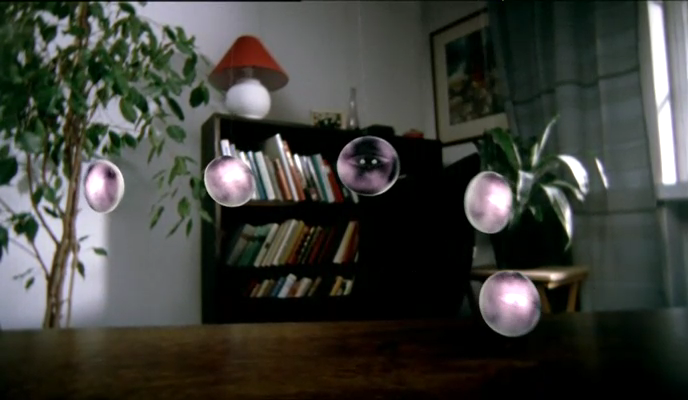
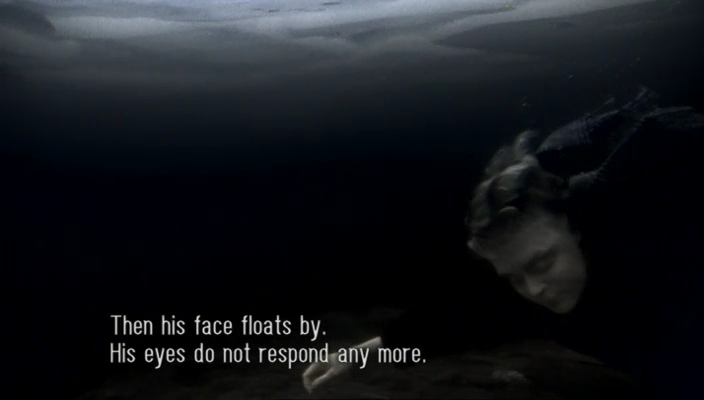
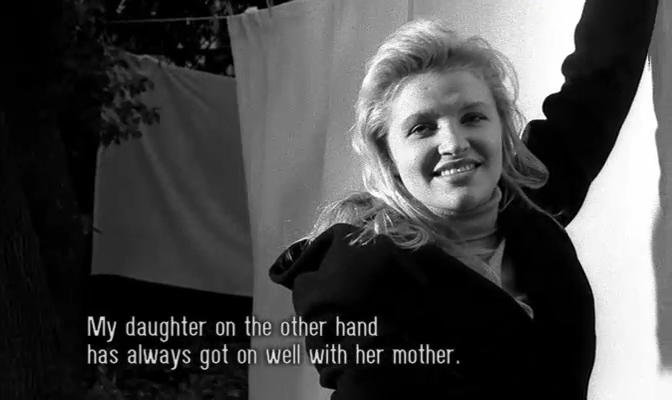
Share this via karagarga or thepiratebay.
at 10:37 AM
Steve Kurtz lecture at Digital Art Festival in Aarhus, Denmark (2007)
Tuesday, November 13, 2007

Steve Kurtz is a member of Critical Art Ensemble. They are primarily known for their work on bio politics. This is a one hour talk Steve did at a Digital Art Festival in Aarhus, on crime and political aspects in art.
Strange Culture by Lynn Hershman Leeson, which is a 75min. documentary, will be posted here somewhat soon since Lynn has agreed to let me distribute it via this site, karagarga and several other bittorrent trackers.
The surreal nightmare of internationally-acclaimed artist and professor Steve Kurtz began when his wife Hope died in her sleep of heart failure. Police who responded to Kurtz’s 911 call deemed Kurtz’s art suspicious and called the FBI. Within hours the artist was detained as a suspected "bioterrorist" as dozens of federal agents in Hazmat suits sifted through his work and impounded his computers, manuscripts, books, his cat, and even his wife’s body. Today Kurtz and his long-time collaborator Dr. Robert Ferrell, Professor of Genetics at the University of Pittsburgh Graduate School of Public Health, await a trial date.
More info at CAE DEFENSE FUND.
Share the talk via thepiratebay or karagarga.
at 11:38 AM
Martha Rosler - A Simple Case for Torture (or how to sleep at night) (1983)



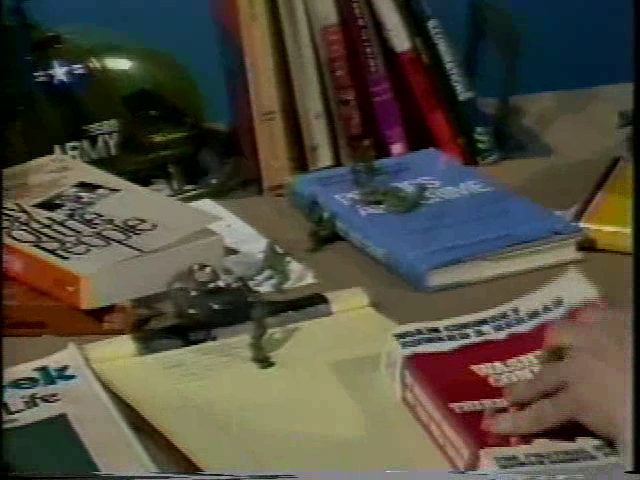
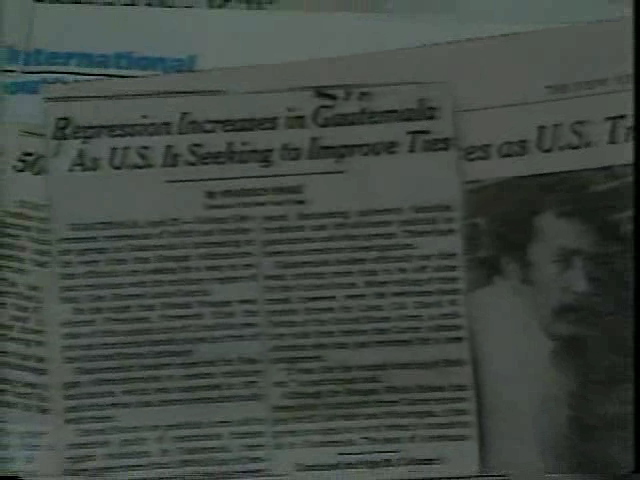
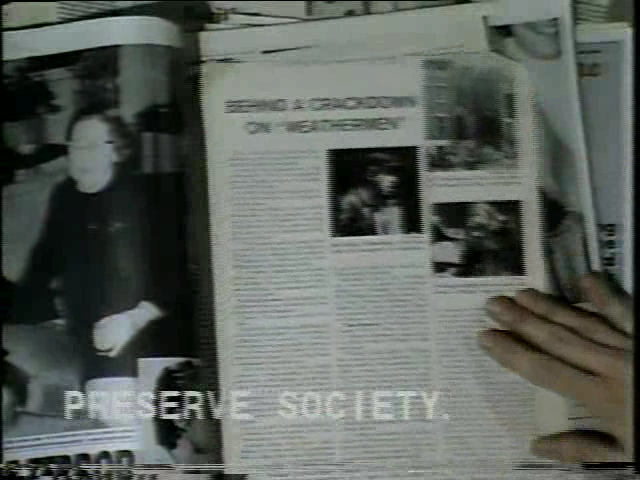
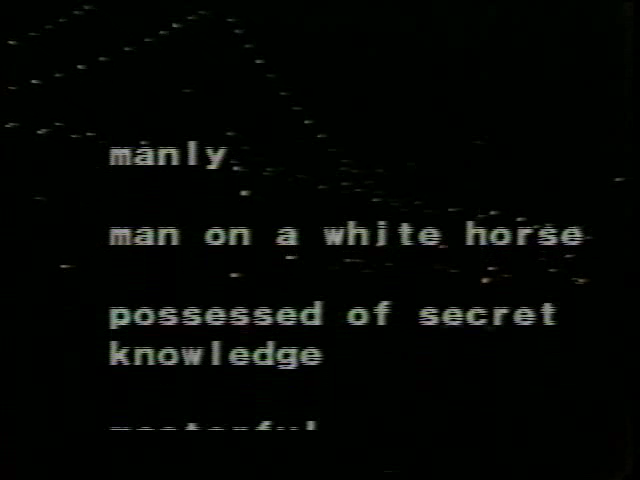
Rosler identifies the totalitarian implications of an argument for torture, under certain circumstances, as it appears in the editorial pages of Newsweek magazine. Her critique is presented as voiceover and an assemblage of print media—articles on subjects ranging from human rights to unemployment and global economics. Implicating the U.S. government and American businesses for supporting regimes that systematically use torture, she indicts the American press for its role as an agent of disinformation through selective coverage, its use of language, and for implicitly legitimizing points of view that support torture.
Share this via thepiratebay or karagarga.
at 10:30 AM